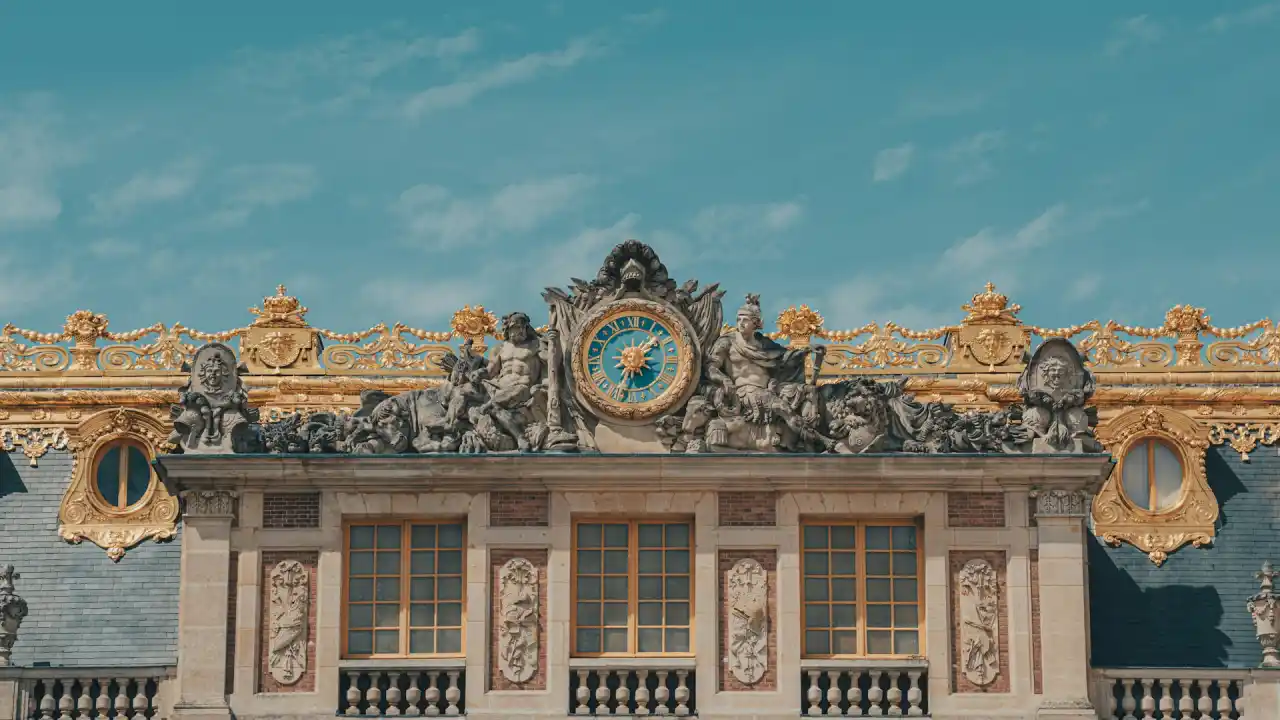
Customer support to help you with everything you need from 8.00 a.m. to 6.00 p.m.

Choose the best option for your needs and preferences and avoid the lines booking here

Enjoy art and history in Versailles, French monarchy’s masterpiece

The Queen’s Hamlet, also known as the Hameau de la Reine, is a charming rustic retreat located in the sprawling grounds of the Palace of Versailles. This idyllic village was commissioned by Queen Marie Antoinette in 1783 as a place where she and her closest friends could escape the formalities and pressures of court life. The Queen’s Hamlet offers a fascinating glimpse into the private life of one of history’s most iconic figures and stands as a unique blend of pastoral simplicity and royal luxury. This article delves into the history, architecture, and cultural significance of the Queen’s Hamlet at Versailles.
Marie Antoinette, the wife of King Louis XVI, is often remembered for her extravagant lifestyle and her controversial position in French history. Amidst the grandeur of Versailles, she sought a private refuge where she could enjoy the simplicity of rural life. Influenced by the contemporary romanticism of nature and the pastoral ideal, she envisioned a village that would allow her to experience the charm and tranquility of the countryside.
The Queen’s Hamlet was designed by the architect Richard Mique, who had previously worked on other projects for Marie Antoinette, including the Petit Trianon. Construction began in 1783 and was completed in 1786. The hamlet was inspired by the rustic villages depicted in landscape paintings and literature of the time. It was intended to be a functional farm as well as a picturesque retreat, complete with cottages, a mill, a dairy, and a farmhouse.
The architecture of the Queen’s Hamlet is characterized by its deliberately rustic and quaint appearance. The buildings are constructed with a mix of materials, including wood, thatch, and stone, to create an authentic rural look. Each structure was carefully designed to blend seamlessly with the natural surroundings, giving the impression of a timeless village untouched by the opulence of the palace nearby.
The centerpiece of the hamlet is the Queen’s House (Maison de la Reine), a two-story building that served as Marie Antoinette’s personal retreat. It features a half-timbered facade, a thatched roof, and beautifully decorated interiors. The Queen’s House is connected to the Billiard House (Maison de Billard) by a wooden gallery, allowing easy access between the two structures.
The Mill (Moulin) is one of the most picturesque buildings in the hamlet. Although it was designed to resemble a working watermill, it was purely ornamental and never functioned as a mill. The structure adds to the idyllic charm of the village, with its waterwheel and rustic stonework.
The Dairy (Laiterie de Propreté) was where the Queen and her guests could enjoy fresh milk and dairy products. Unlike the working dairy of the farm (Laiterie de Préparation), this dairy was designed for more refined and leisurely activities, reflecting the Queen’s taste for elegance even in a rural setting.
The Farmhouse (Ferme) was an essential part of the hamlet’s agricultural function. It housed livestock and provided fresh produce for the Queen’s table. The farmhouse was managed by a farmer and included barns, stables, and a chicken coop.
Surrounding the hamlet are beautifully landscaped gardens and a tranquil lake. The gardens were designed to enhance the pastoral ambiance, with winding paths, flower beds, and groves of trees. The lake, complete with a small island and a grotto, adds to the serene atmosphere and offers stunning reflections of the village buildings.
The Queen’s Hamlet was more than just a fanciful escape for Marie Antoinette; it represented her desire for privacy and a simpler way of life. At Versailles, the Queen was constantly surrounded by courtiers and subjected to the rigid protocols of the royal court. The hamlet provided a sanctuary where she could relax, entertain close friends, and indulge in her love for nature.
The design and purpose of the Queen’s Hamlet were heavily influenced by the writings of Jean-Jacques Rousseau, particularly his advocacy for a return to nature and the virtues of simple living. Rousseau’s ideas were popular among the French aristocracy at the time, and the hamlet can be seen as an embodiment of these romantic ideals.
Despite its charm, the Queen’s Hamlet became a symbol of Marie Antoinette’s detachment from the harsh realities faced by the French populace. Critics argued that the Queen’s extravagant playacting in a mock village, while the country was experiencing economic hardship, highlighted her insensitivity to the struggles of ordinary people. This perception contributed to the growing discontent that eventually led to the French Revolution.
Following the French Revolution, the Queen’s Hamlet fell into disrepair. However, significant restoration efforts in the 20th and 21st centuries have revived its former beauty. Today, the hamlet is meticulously maintained, allowing visitors to experience the charm and tranquility that Marie Antoinette once cherished.
The Queen’s Hamlet is open to the public as part of the larger Palace of Versailles estate. Visitors can explore the village, stroll through the gardens, and admire the picturesque buildings. The interiors of some structures, including the Queen’s House, have been restored to reflect their original appearance, offering a glimpse into the private world of Marie Antoinette.
The hamlet also serves an educational purpose, with programs and exhibits that explain its historical and cultural significance. These initiatives help visitors understand the context in which the hamlet was created and the role it played in the life of the Queen.
The Queen’s Hamlet at Versailles is a unique historical and architectural gem that offers insight into the personal life and tastes of Marie Antoinette. Its rustic charm and picturesque setting contrast sharply with the grandeur of the main palace, reflecting the Queen’s desire for simplicity and privacy. Despite its controversial history, the hamlet remains a testament to the romantic ideals of the 18th century and continues to enchant visitors with its timeless beauty.
By preserving and showcasing the Queen’s Hamlet, we not only honor the memory of Marie Antoinette but also gain a deeper understanding of the complexities of her character and the world in which she lived. Whether admired for its aesthetic appeal or studied for its historical significance, the Queen’s Hamlet remains an integral part of the Versailles experience, captivating the imagination of all who visit.
VERSAILLES PLACES
Versailles is a royal palace 20 kilometers outside of Paris, in the homonymous city of Versailles. It is one of the largest…
VERSAILLES PLACES
The Gardens of Versailles They are the most popular French gardens, not only in France but also in the rest of the world.
VERSAILLES PLACES
The park at Versailles ought to be mentioned as a unique location that amazes with its variety, beauty, and integrity. Additionally…
